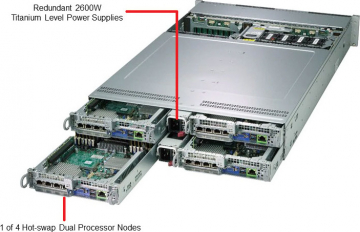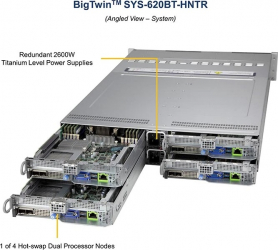Cluster Computing - High performance via computer clustering
If you want to increase availability or computing capacity, Cluster Computing is the perfect solution. Here at HAPPYWARE, we explain what is behind the technology and what possibilities our cluster computing solutions have to offer.
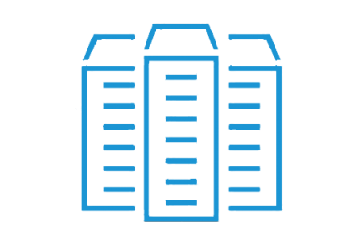
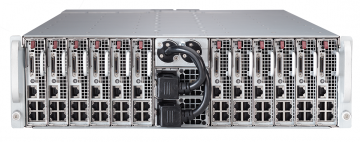
HPC Clusters
Buy HPC Cluster, High Performance Computing Cluster as a turnkey solution!
HPC clusters correctly advised and cluster price kept low e.g. for financial simulations. Based on Supermicro, Gigabyte or Tyan Servers
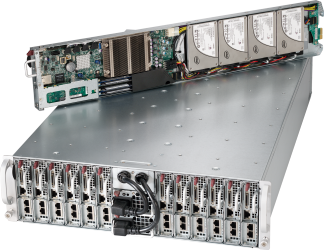
Cluster Server, Cluster Nodes
Cluster Server Nodes: Configure and buy single node or ask for a quote here!
Here you can find your Cluster Node, Cluster PCs and Mini-Cluster e.g. as Cluster File Server with two nodes
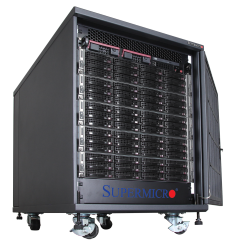
Virtualization Cluster
Cluster in a Box solutions: Fault tolerant and fully redundant
Virtualization clusters with the best price/performance for maximum reliability!
Here you'll find Cluster Computing
Do you need help?
Simply call us or use our inquiry form.
What is a cluster?
In IT-Business, clusters are computer systems that are made available in a loose coupling for special tasks. In general, a cluster consists of four different parts:
- A control unit which, depending on the type of cluster, is an independent system and is often known as the front-end system.
- The nodes that do the work. These are called cluster nodes.
- A common data area that all systems belonging to the cluster can access.
- A common network (see High-Performance Networks).
The individual systems are managed jointly.
The history of Cluster Computing
Cluster Computing has been around since the 1980s. The company DEC (Digital Equipment Cooperation) presented a way to connect their micro-vaxes with a large VAX via Ethernet so that they could use the shared data memory.
Later, when the first parallel computers were introduced, it was discovered that they were quite expensive because these IT systems required special hardware and software that was only used by a few customers.
Based on the old DEC solution, normal PCs running Linux were combined to form a cluster. One of the first solutions in cluster computing was the Beowulf cluster.
What computer clusters can do today
As systems and networks become more and more powerful, today's clusters have become an essential part of the modern IT landscape. No single IT system can solve complex computation tasks alone in an acceptable time. Today, ever more data is captured at various points, and the amount of data available increases continuously every year. It is therefore of growing importance to reliably process this data within the shortest possible time. IT systems that are designed for the computation of such data volumes fall under the umbrella of "High-Performance Computing". These computer cluster systems consist of special high-performance computers and GPU computing solutions. The common data area can be a single NFS server or a high-performance storage solution.
What types of computer clusters are there?
Depending on the requirements placed on the cluster, these can be divided into different categories:
- High-Performance Computing - Cluster Computing for High Demands This type of cluster can be found in technical and scientific sectors such as universities, research institutions, and corporate research departments. The time required for computation should be as short as possible because a considerable amount of information is transported between the individual IT systems. This calls for a network with short latency and fast transmission times. For more information on this type of cluster computing, refer to our article on high-performance networks.
- Big Data - Cluster Computing for processing large data packets This type of cluster computing is ideal for creating analyses from a huge amount of heterogeneous data according to different specifications. The individual nodes usually have a large data storage of their own. From the huge amount of heterogeneous data, each node is assigned one part. The data is usually transported over the network only at the beginning and end. As a result, a short latency time of the network is not necessary for this type of cluster. However, the data packages to be transported are very large. This type of cluster computing is often used in marketing, for example, to analyze buyer behavior.
- High-Performance Data Analytics - Cluster Computing for high data volumes in a short time Just as with BIG Data Cluster Computing, processing of extensive data volumes is possible with high-performance data analytics. The difference is that here the computation must take place within fractions of a second. The nodes of such a cluster benefit from GPU add-on boards, which simultaneously compute fast processing based on FP64 and FP32 data using AI software. You can read more about this in our article on GPU Computing. A typical example of this type of cluster computing is high-frequency stock trading.
- Visualization - Cluster Computing for powerful simulations The product development of e.g. aircraft as well as the process development in the chemical industry are nowadays usually carried out entirely in an IT system and fully simulated there. After the first production run, this simulation also includes real data (IoT). This results in huge amounts of data that have to be displayed in video or animation form. Clusters that have to cope with these requirements require GPU add-on cards and fall under the category of visualization clusters.
- Virtualization Virtualization is an application that can be found everywhere these days. The virtualized systems can be moved from one node to the other in a few seconds. In these clusters, the control unit is often a complex control program.
- Load Balancer Load balancing clusters distribute an incoming data stream — as it occurs in the Web server area — to a Web server cluster arranged downstream. Nowadays, these clusters are a component of software-defined networking. The hardware used (Bare Metal Switch) is a special system with many network connections, on which Cumulus Linux runs as the base operating system.
Various Computer Cluster Solutions at HAPPYWARE
If you have questions about cluster computing or you would like to find out which solutions from our product range are best for you, please contact us - we will be happy to help.




